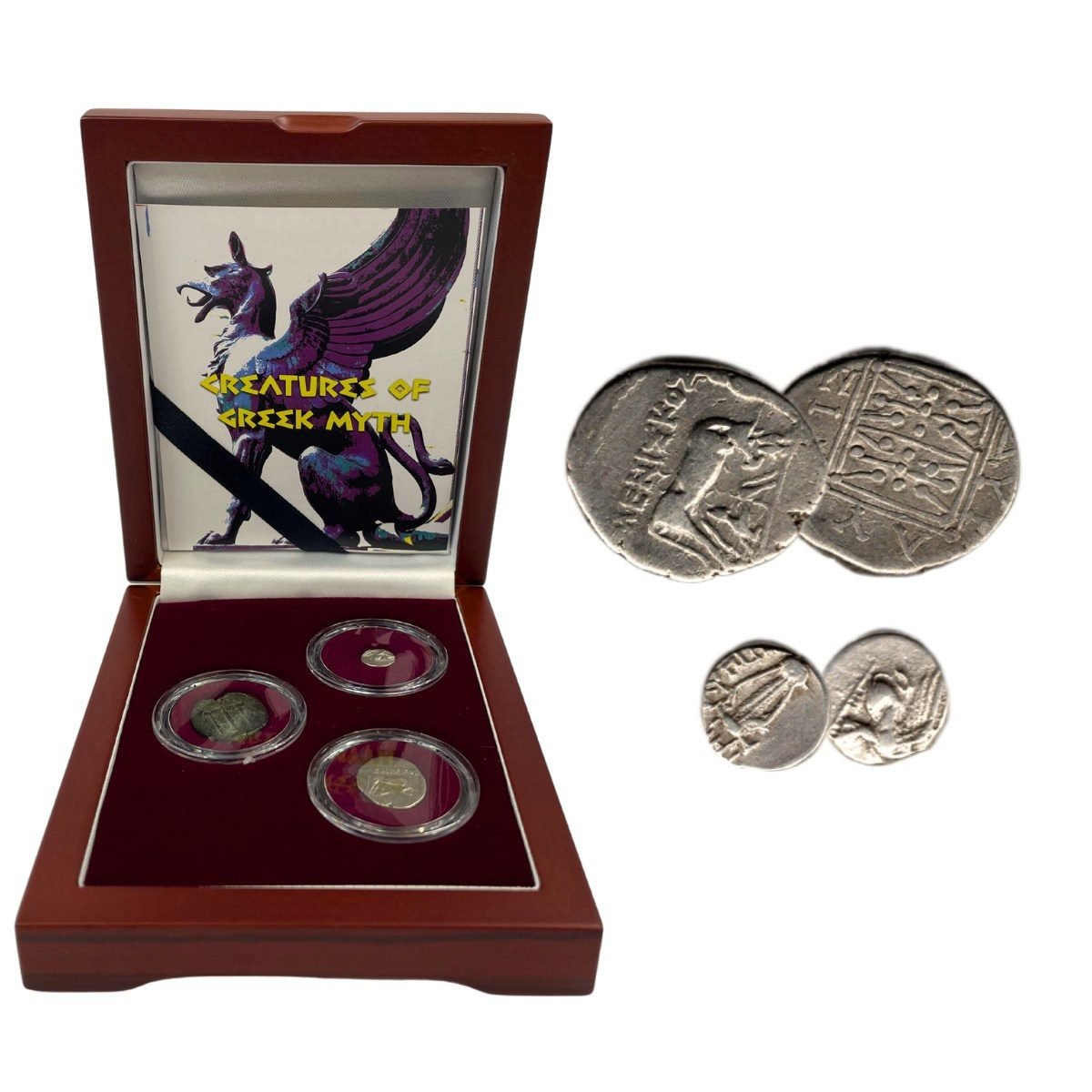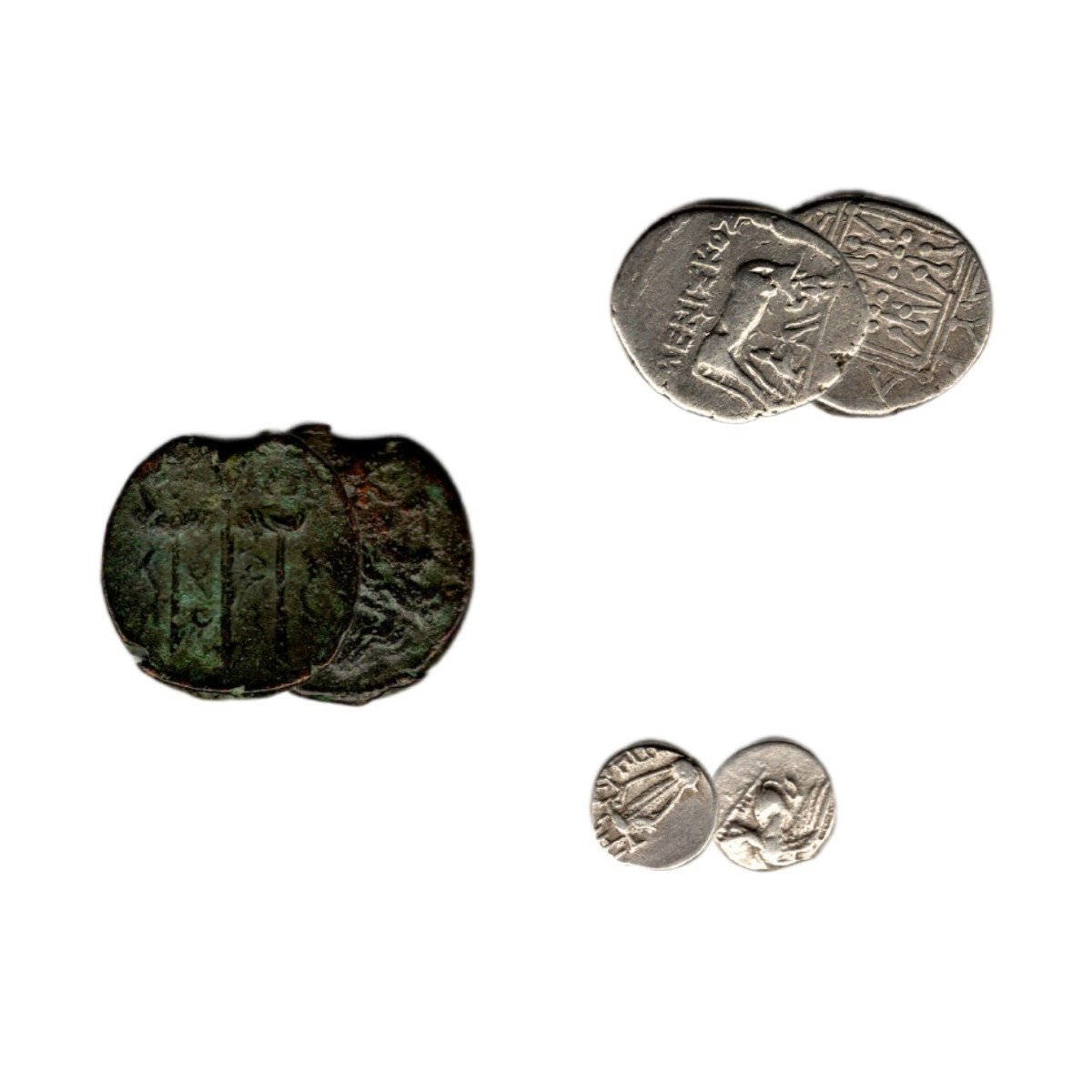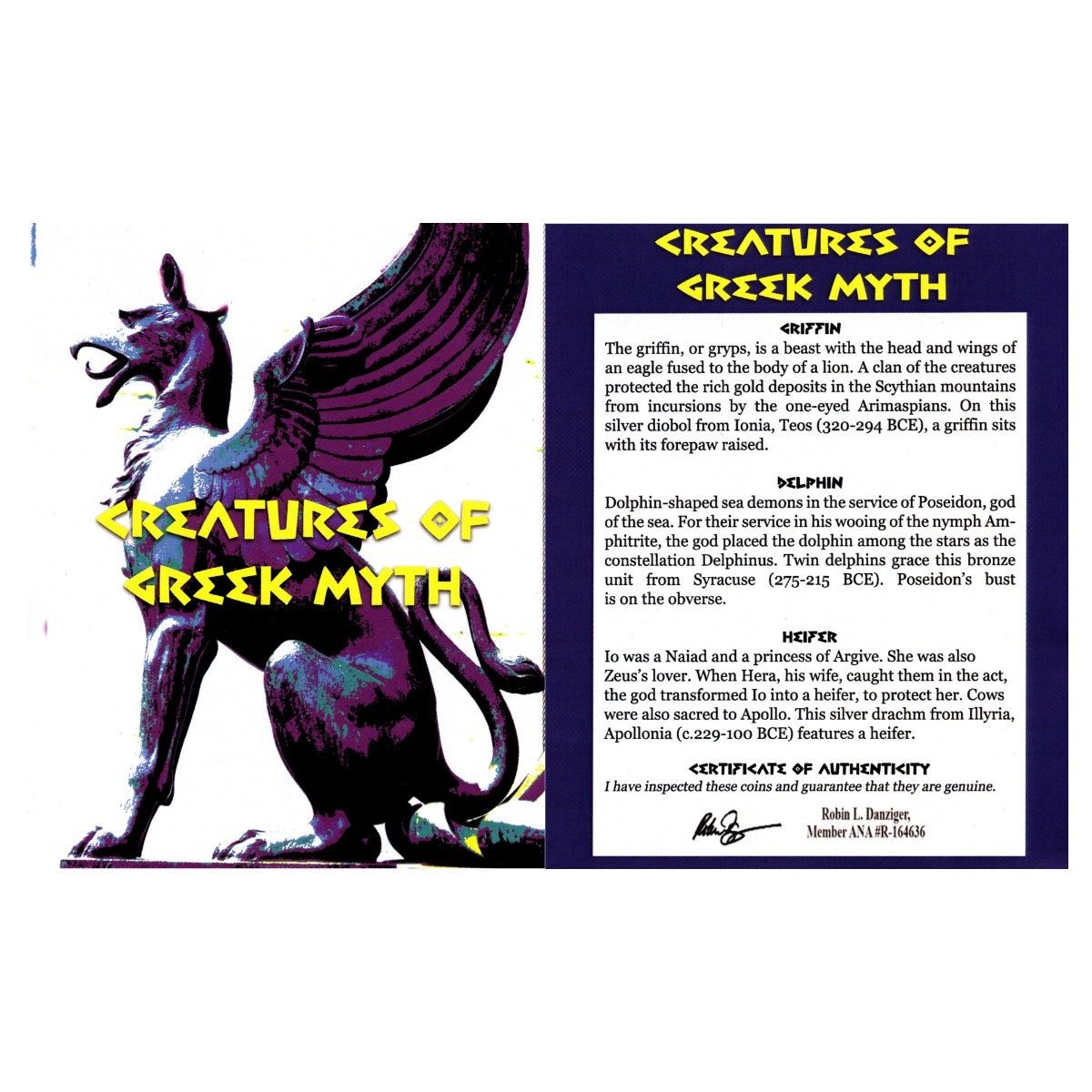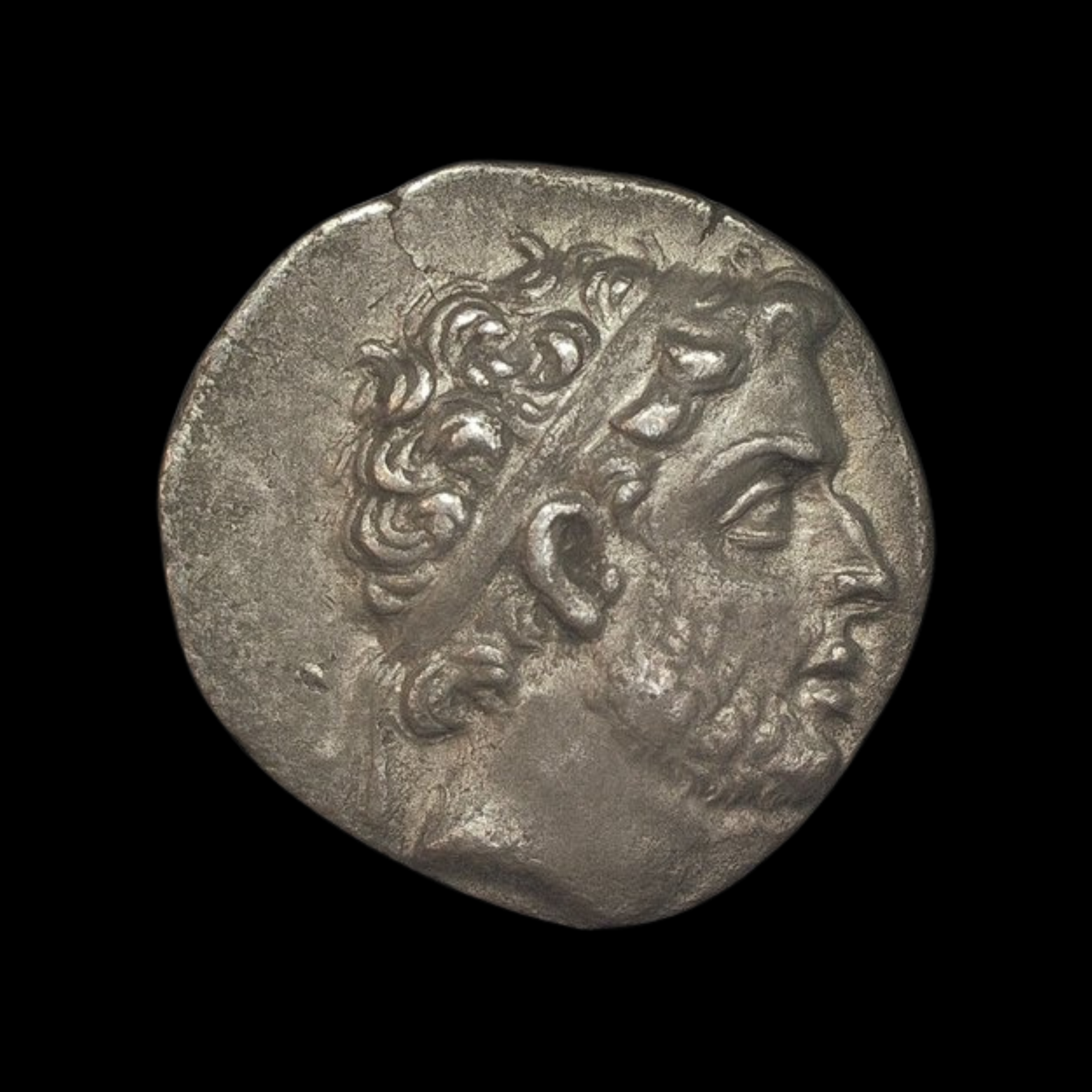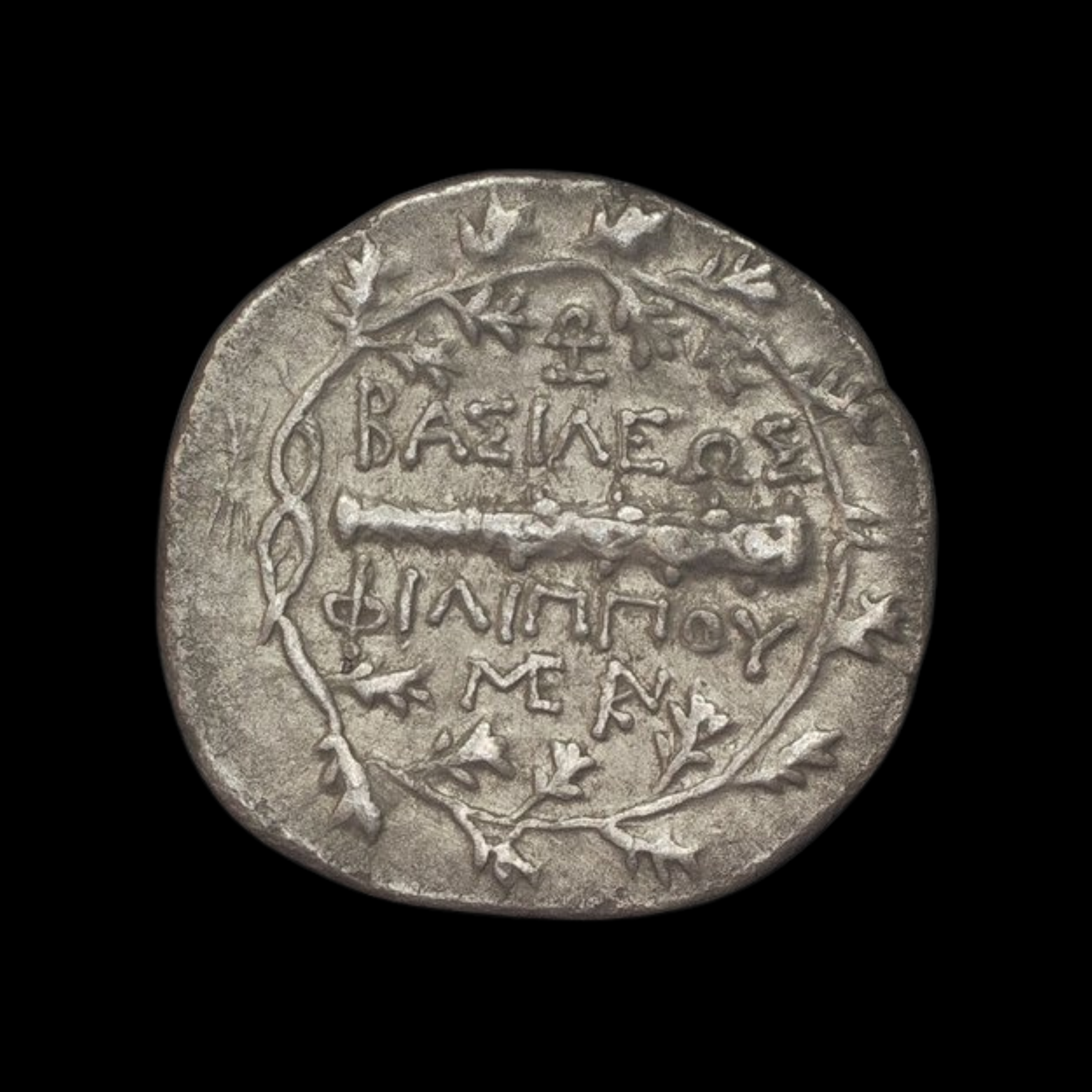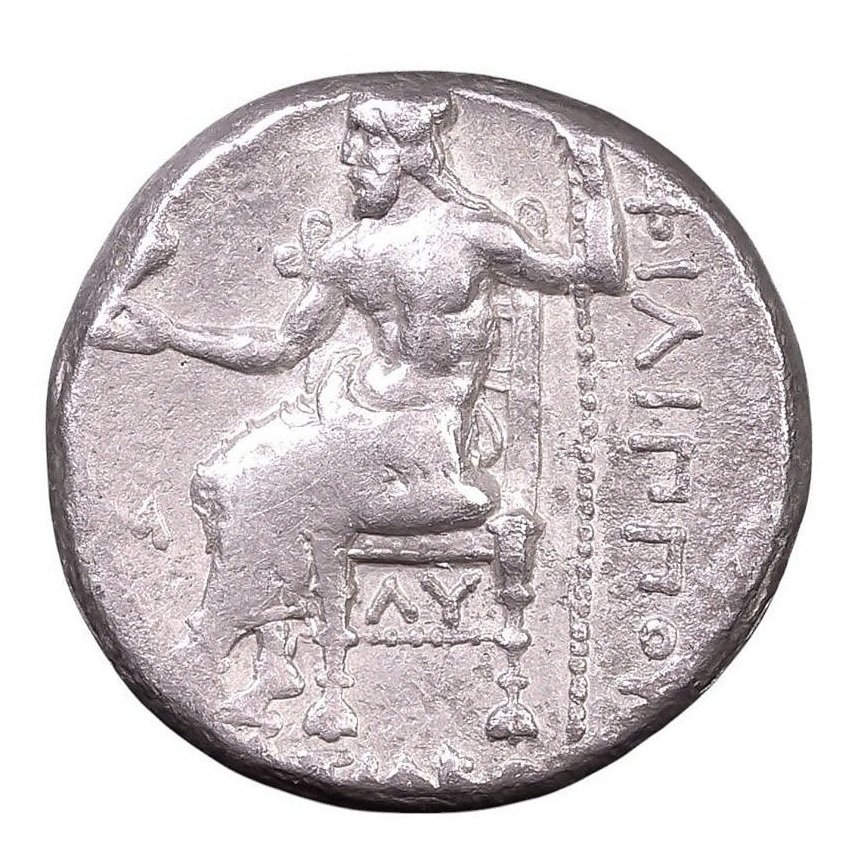Sicilian Silver Tetradrachm (Large Silver Coin) from the Deinomenid Tyranny Period (about 2490 years ago)
This large silver tetradrachm (worth four drachms) was minted between 485-466 BC during the Deinomenid Tyranny period in Sicily (island in the Mediterranean).
Front Side: Depicts a charioteer driving a slow quadriga (four-horse chariot) to the right with Nike (goddess of victory) flying above
Back Side: Features the diademed head of Arethusa (nymph associated with a spring in Syracuse) facing right, surrounded by four dolphins swimming clockwise
Technical Details:
Weight: 16.85 grams
References:
Sear: SG 914
Historical Significance: This coin was minted during the rule of the Deinomenid tyrants (Gelon, Hieron I, and Thrasybulus) who controlled Syracuse and much of Sicily. This period marked the height of Syracuse's power and prosperity, following their crucial victory over the Carthaginians at the Battle of Himera in 480 BC. The quadriga imagery on these coins often commemorated victories in the prestigious Panhellenic games, a source of great pride for Greek cities. The dolphins surrounding Arethusa symbolize the maritime nature of Syracuse, while the high artistic quality of these coins demonstrates the wealth and cultural sophistication of Sicily during this golden age of Greek colonization.
This large silver tetradrachm (worth four drachms) was minted between 485-466 BC during the Deinomenid Tyranny period in Sicily (island in the Mediterranean).
Front Side: Depicts a charioteer driving a slow quadriga (four-horse chariot) to the right with Nike (goddess of victory) flying above
Back Side: Features the diademed head of Arethusa (nymph associated with a spring in Syracuse) facing right, surrounded by four dolphins swimming clockwise
Technical Details:
Weight: 16.85 grams
References:
Sear: SG 914
Historical Significance: This coin was minted during the rule of the Deinomenid tyrants (Gelon, Hieron I, and Thrasybulus) who controlled Syracuse and much of Sicily. This period marked the height of Syracuse's power and prosperity, following their crucial victory over the Carthaginians at the Battle of Himera in 480 BC. The quadriga imagery on these coins often commemorated victories in the prestigious Panhellenic games, a source of great pride for Greek cities. The dolphins surrounding Arethusa symbolize the maritime nature of Syracuse, while the high artistic quality of these coins demonstrates the wealth and cultural sophistication of Sicily during this golden age of Greek colonization.
This large silver tetradrachm (worth four drachms) was minted between 485-466 BC during the Deinomenid Tyranny period in Sicily (island in the Mediterranean).
Front Side: Depicts a charioteer driving a slow quadriga (four-horse chariot) to the right with Nike (goddess of victory) flying above
Back Side: Features the diademed head of Arethusa (nymph associated with a spring in Syracuse) facing right, surrounded by four dolphins swimming clockwise
Technical Details:
Weight: 16.85 grams
References:
Sear: SG 914
Historical Significance: This coin was minted during the rule of the Deinomenid tyrants (Gelon, Hieron I, and Thrasybulus) who controlled Syracuse and much of Sicily. This period marked the height of Syracuse's power and prosperity, following their crucial victory over the Carthaginians at the Battle of Himera in 480 BC. The quadriga imagery on these coins often commemorated victories in the prestigious Panhellenic games, a source of great pride for Greek cities. The dolphins surrounding Arethusa symbolize the maritime nature of Syracuse, while the high artistic quality of these coins demonstrates the wealth and cultural sophistication of Sicily during this golden age of Greek colonization.




